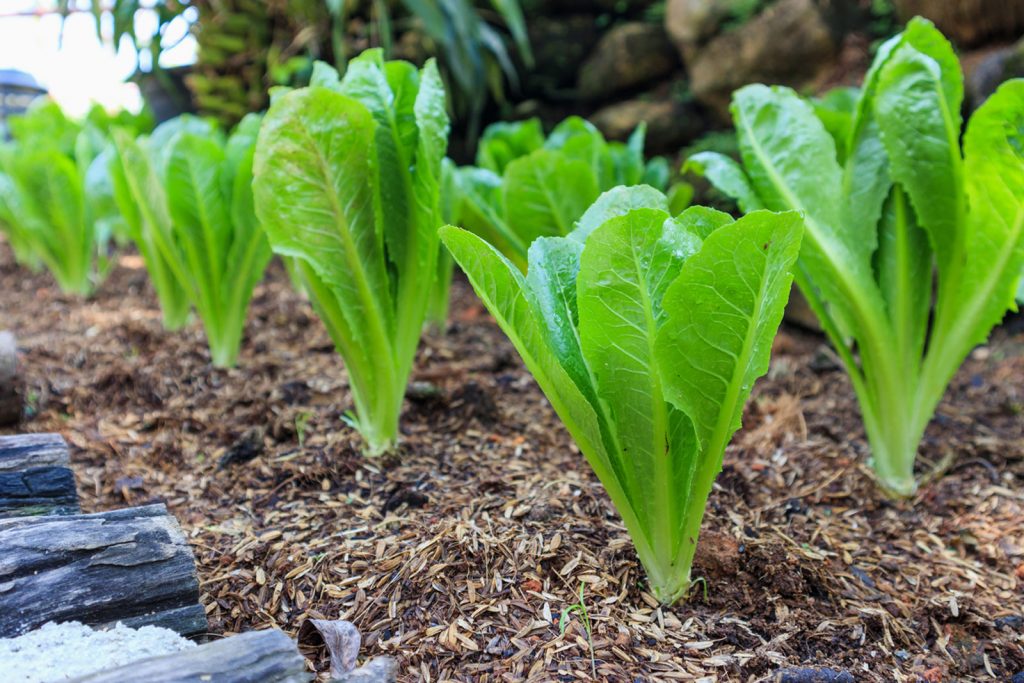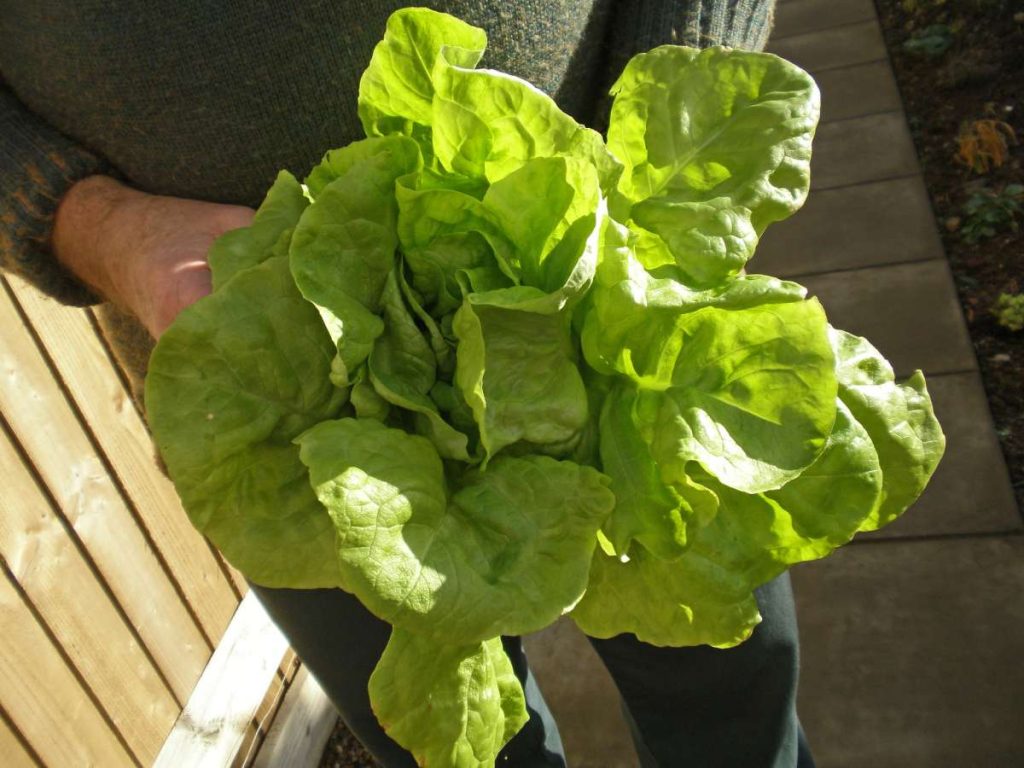Lettuce is a popular vegetable that can be found in many dishes across various cultures and cuisines worldwide. It is a low-calorie count and contains significant amounts of vital vitamins and minerals. From salads to sandwiches, there are numerous ways to enjoy lettuce.
Like all other plants out there, lettuce needs water to survive and grow. Lettuce needs about 1 to 1.5 inches of water per week, or about 0.15 to 0.25 inches per day, depending on the climate zone and the growth stage of your lettuce.
Water is vital for nutrient absorption, photosynthesis, and maintaining cell structure. Without sufficient water, your lettuce plants can suffer and may even die.
However, it’s vital to get the right balance when it comes to watering your lettuce. Too little water can lead to stunted growth, wilted leaves, and a bitter taste. On the other hand, overwatering can drown the roots, cause root rot, and attract pests and diseases.
How Much Water Does Lettuce Need?

How much water that lettuce requires can vary depending upon several factors, including the stage of growth, Climate conditions, and the specific variety of lettuce that you’re growing. Lettuce plants require regular watering of about 1-2 inches every four to five days.
During hot and dry weather, lettuce plants may require watering once per day to prevent dehydration. During periods of heavy rainfall, you may need to adjust your watering schedule.
Another factor to consider is the stage of growth of your lettuce plants. Younger plants need less water than more mature ones, as their root systems are not yet fully developed.
Also Read: How to: Growing Lettuce In Raised Beds?
Factors that affect water needs
The water needs of lettuce can depend on various factors. By understanding these factors, you can adjust your watering methods for your lettuce plant. Here are some of the factors that can impact the water needs of your lettuce:
1. Climate – The amount of water that lettuce requires can differ depending on the climate conditions in your area. As lettuce plants grown in hot, dry climates will require more water than those grown in cooler, more humid environments.
2. Soil type – The type of soil that you are using in your lettuce can also impact its water needs. Soils that drain quickly, such as sandy soils, will require more regular watering other than soils that have moisture well, like loamy soils.
3. Stage of growth – As lettuce plants grow and mature, their water needs will change according to it. Young plants will require less water than mature plants, and plants that are producing fruits or seeds will require more water than those that are not.
4. Variety of lettuce – Different types of lettuce have different water needs.
5. Container size – If you are growing lettuce in containers, the size of the container can impact the water needs of your plants. Smaller containers will require more regular watering as compared to larger containers, as they will dry out more quickly.
Also Read: How Much Sunlight Does Lettuce Need to Grow?
How to water lettuce plants?
Watering lettuce plants can be tricky, as they require even moisture without becoming waterlogged. Here are some tips to help you water your lettuce plants correctly –
1. Water consistently – It’s vital to water Lettuce plants regularly as they need consistent moisture to thrive well. A good rule of thumb is to water your plants every four to five days or whenever the top inch of soil feels dry to the touch.
2. Water deeply – Be sure to water your lettuce plant deeply so that the water can reach the roots of the plant. This will promote deep root growth, which will help your plants to access nutrients and water more efficiently.
3. Water in the morning – It’s recommended to water your lettuce plants in the morning, as this will give the plant time to absorb the water before the heat of the day sets in. Watering in the evening can lead to excess moisture on the leaves, which can encourage the growth of fungi or bacteria.
4. Avoid overhead watering – It’s not a good idea to water your lettuce plants from above with a sprinkler or hose. This can cause water to collect on the leaves, which can create a breeding ground for harmful bacteria and fungi. Instead, it’s better to water your lettuce plants at the soil level, so that the water goes directly to the roots.
5. Add mulch to your plants – Adding a layer of mulch around your lettuce plants can help to retain moisture in the soil and prevent evaporation.
Also Read: Can You Plant Lettuce and Carrots Together?
Signs of overwatering or under-watering
Over-watering or under-watering your lettuce plants can have a negative impact on their growth and health. Here are some signs to look for –
1. Over-watering – If you’re watering lettuce plants too much, you can notice on your plant that the leaves are yellowing or wilting, and the soil may be damp or even waterlogged. You may also see mold or mildew growing on the leaves or soil. Over-watering can lead to root rot, which can cause your plants to die.
2. Under-watering – On the other hand, if your lettuce plants aren’t getting enough water, they may appear dry and wilted, and the soil can be dry to the touch. Under-watering can cause your plants to become stressed and stunted.
3. Check the soil – One way to know whether your plants are getting the right amount of water or not is to check the soil moisture. If the soil is dry, it’s a sign that your plants need more water. If the soil is too wet, you may need to reduce the amount of water in your plant.
4. Pay attention to the weather – Another factor to consider is the weather. During hot, dry weather, your plants will likely need more water than during cooler weather. Be sure to adjust your watering schedule accordingly to it.
5. Adjust your watering – If you notice signs of overwatering or under-watering, you can adjust your watering schedule to help your plants recover. If you’re overwatering, try reducing the amount of water you apply or watering less frequently. If you’re under-watering, try increasing the amount of water you apply or watering more frequently.
Also Read: How to Grow Lettuce Microgreens?
Common mistakes to avoid
While watering lettuce may seem like a simple task, there are a few common mistakes that people do.
1. Over-watering is one of the most common mistakes that gardeners make when watering lettuce. As mentioned earlier, overwatering can lead to root rot and other fungal diseases that can cause your plants to die. It’s vital to make sure that the soil is moist but not waterlogged.
2. Similarly, under-watering your lettuce plants can cause them to become stressed and stunted. Make sure to water your plants thoroughly and regularly, especially during hot and dry weather.
3. Overhead watering can cause water to collect on the leaves, which can promote the growth of fungi and bacteria. It’s best to water your plants at the soil level to avoid this problem.
4. Inconsistent watering can also cause problems for your lettuce plants. It’s vital to establish a regular watering schedule and stick to it.
5. Using cold water can shock your plants and cause them to become stressed. Make sure to use lukewarm and room-temperature water when watering your lettuce.
6. Watering during the heat of the day can cause the water to evaporate quickly. It’s recommended to water your plants early in the morning or in the evening when the temperatures are cooler.
Conclusion
Watering lettuce plants can be delicate work that needs attention and care. Knowing how much water your plants need and when to water them can make a significant difference in their health and growth.
By following the above tips and taking a mindful approach to water your lettuce, you can enjoy a great harvest of healthy and delicious lettuce greens.

